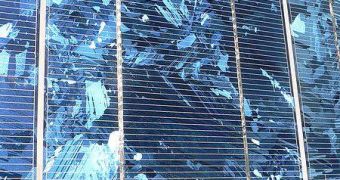As an essential part of the United States' future energy security strategy, solar cells are now the object of a large-scale investigation, conducted by experts at the US Department of Energy's (DOE) Savannah River National Laboratory (SRNL) facility. The goal of the new study is to discover special coatings for these devices that would act like structures found in nature, and which have the potential to significantly boost energy productivity and efficiency.
SRNL expert Dr. Marie Kane is working closely together with University of Florida scientist Peng Jiang on this research. At this point, the duo is evaluating the potential applications for nanostructured coatings, which hold promise in the field of solar reflection. This phenomenon is responsible for the largest part of the light that is currently being wasted in solar cells. As high-energy photons (the particles that make up light) slam into the solar cells, they bounce back, never to be recovered again.
If the study is successful, then this class of nanostructures could make their way to solar panels on federal buildings, offices and private homes, in a few years. But the researchers aim at creating panels that would even be able to function in the harsh conditions of space, where more dangers to the physical and structural integrity of the arrays loom than on Earth. This line of investigation is funded under the American Recovery and Reinvestment Act (ARRA), and sponsored by the DOE Office of Energy Efficiency and Renewable Energy Nanomanufacturing Program.
“Solar energy is a tremendous force, but harnessing it for use is not always as simple as it seems. With most types of solar cells, you lose about one-third of the energy because the sunlight is simply reflected away,” Dr. Kane explains. However, existing coatings have the ability to reduce the amount of reflected light of the panels from around 30 percent to about two percent, using shapes that can be found in nature, in moths' eyes.
Up until now, the United States, through various programs, agencies, universities, research institutes, and national laboratories, have invested more than $8.3 billion in nanotechnology as a field of research. Applications for the already discovered materials range from creating sonic black holes and cloaking devices to building faster computer chips and vaccine molecule delivery systems.

 14 DAY TRIAL //
14 DAY TRIAL //